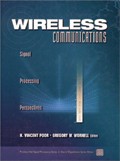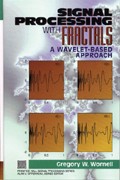Publications
Books

Wireless Communications: Signal Processing Perspectives
H. V. Poor and G. W. Wornell, eds.Prentice-Hall, Inc.: Upper Saddle River, NJ, 1998
Signal processing algorithms and architectures have an increasingly important role to play in meeting the central challenges faced in the design of advanced wireless communication systems. In Wireless Communications: Signal Processing Perspectives, leaders in the field describe state-of-the-art research in applying signal processing methodologies in the context of tomorrow’s most important wireless applications, ranging from next-generation cellular telephony and personal communication services, to nomadic computing and wireless multimedia.
Wireless Communications: Signal Processing Perspectives is a valuable reference both for signal processing specialists seeking to apply their expertise in the rapidly growing wireless communications field, and for communications specialists eager to exploit signal processing techniques and implementations in developing efficient wireless systems of the future.
Wireless Communications: Signal Processing Perspectives includes both physical and network layer topics, and also contains a thought-provoking essay by Andrew J. Viterbi on the laws of nature and society that ultimately govern wireless networks.

Signal Processing with Fractals: A Wavelet-Based Approach
G. W. WornellPrentice-Hall: Upper Saddle River, NJ, 1996
Fractal geometry and recent developments in wavelet theory are having an important impact on the field of signal processing. Efficient representations for fractal signals based on wavelets are opening up new applications for signal processing, and providing better solutions to problems in existing applications. Signal Processing with Fractals provides a valuable introduction to this new and exciting area, and develops a powerful conceptual foundation for understanding the topic. Practical techniques for synthesizing, analyzing, and processing fractal signal for a wide range of applications are developed in detail, and novel applications in communications are explored. Written by a signal processor for signal processors, Signal Processing with Fractals is a self-contained, well-illustrated treatise, and includes a highly accessible concept-oriented primer of the relevant wavelet theory.

